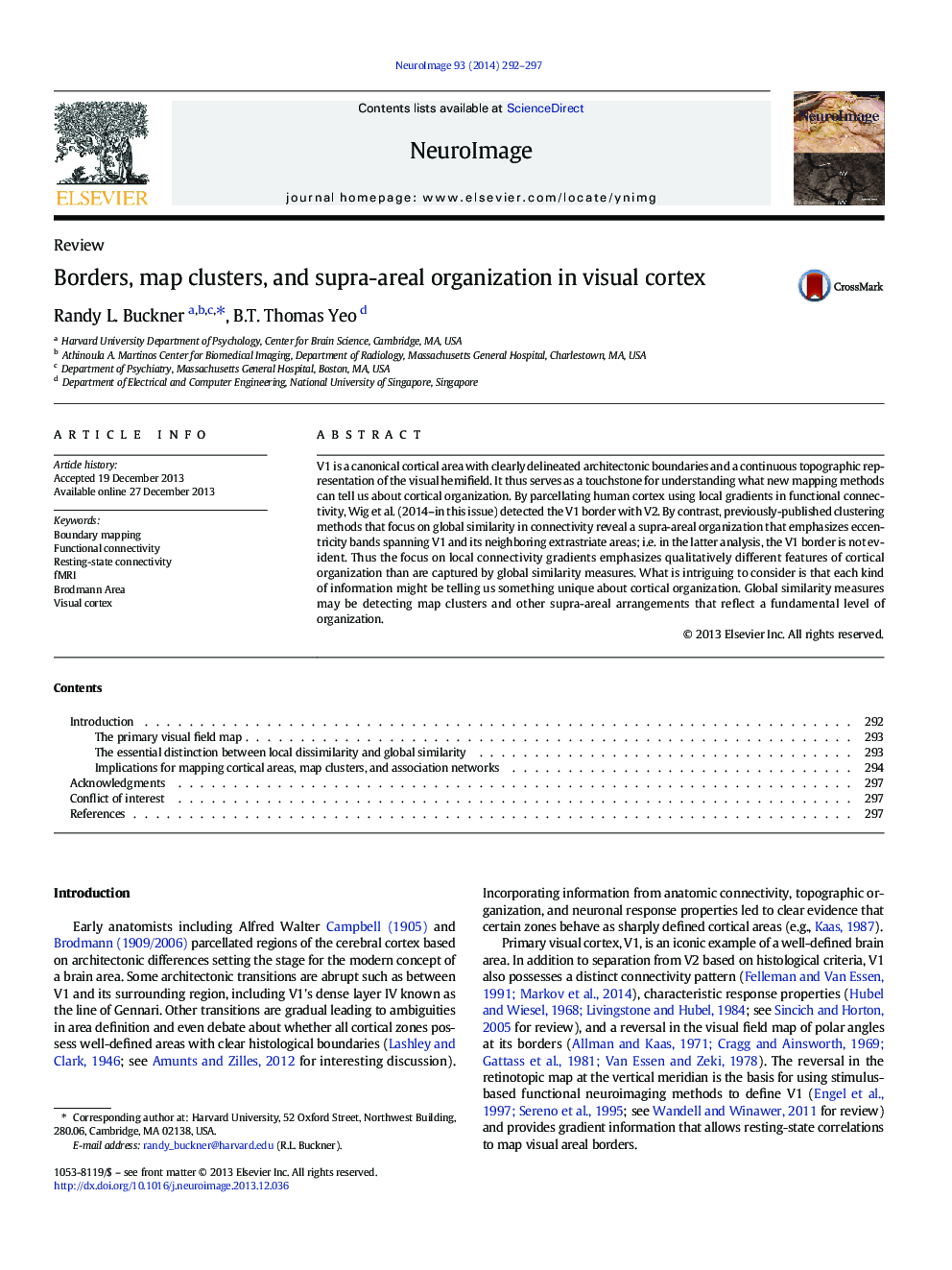| کد مقاله | کد نشریه | سال انتشار | مقاله انگلیسی | نسخه تمام متن |
|---|---|---|---|---|
| 6027476 | 1188692 | 2014 | 6 صفحه PDF | دانلود رایگان |

- Boundary mapping detects the border of V1 using only resting-state connectivity data.
- Boundary mapping can be used to identify candidate areas across all of human cortex.
- Cluster approaches find networks that do not always align to boundary mapping borders.
- Cluster approaches may be detecting supra-areal arrangements and map clusters.
V1 is a canonical cortical area with clearly delineated architectonic boundaries and a continuous topographic representation of the visual hemifield. It thus serves as a touchstone for understanding what new mapping methods can tell us about cortical organization. By parcellating human cortex using local gradients in functional connectivity, Wig et al. (2014--in this issue) detected the V1 border with V2. By contrast, previously-published clustering methods that focus on global similarity in connectivity reveal a supra-areal organization that emphasizes eccentricity bands spanning V1 and its neighboring extrastriate areas; i.e. in the latter analysis, the V1 border is not evident. Thus the focus on local connectivity gradients emphasizes qualitatively different features of cortical organization than are captured by global similarity measures. What is intriguing to consider is that each kind of information might be telling us something unique about cortical organization. Global similarity measures may be detecting map clusters and other supra-areal arrangements that reflect a fundamental level of organization.
Journal: NeuroImage - Volume 93, Part 2, June 2014, Pages 292-297